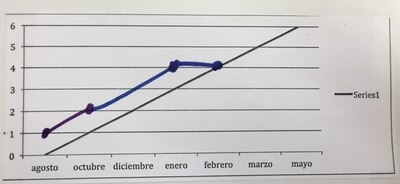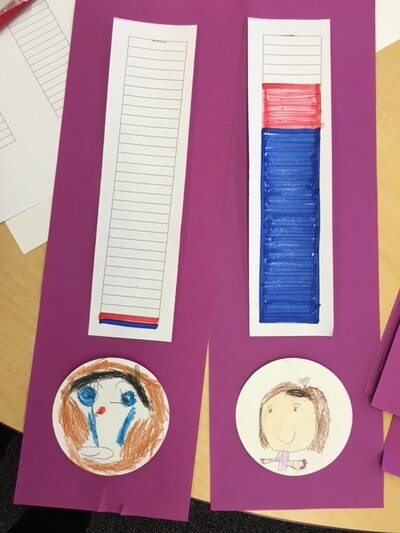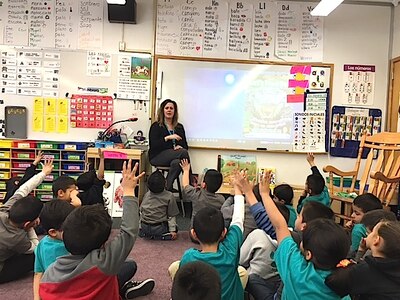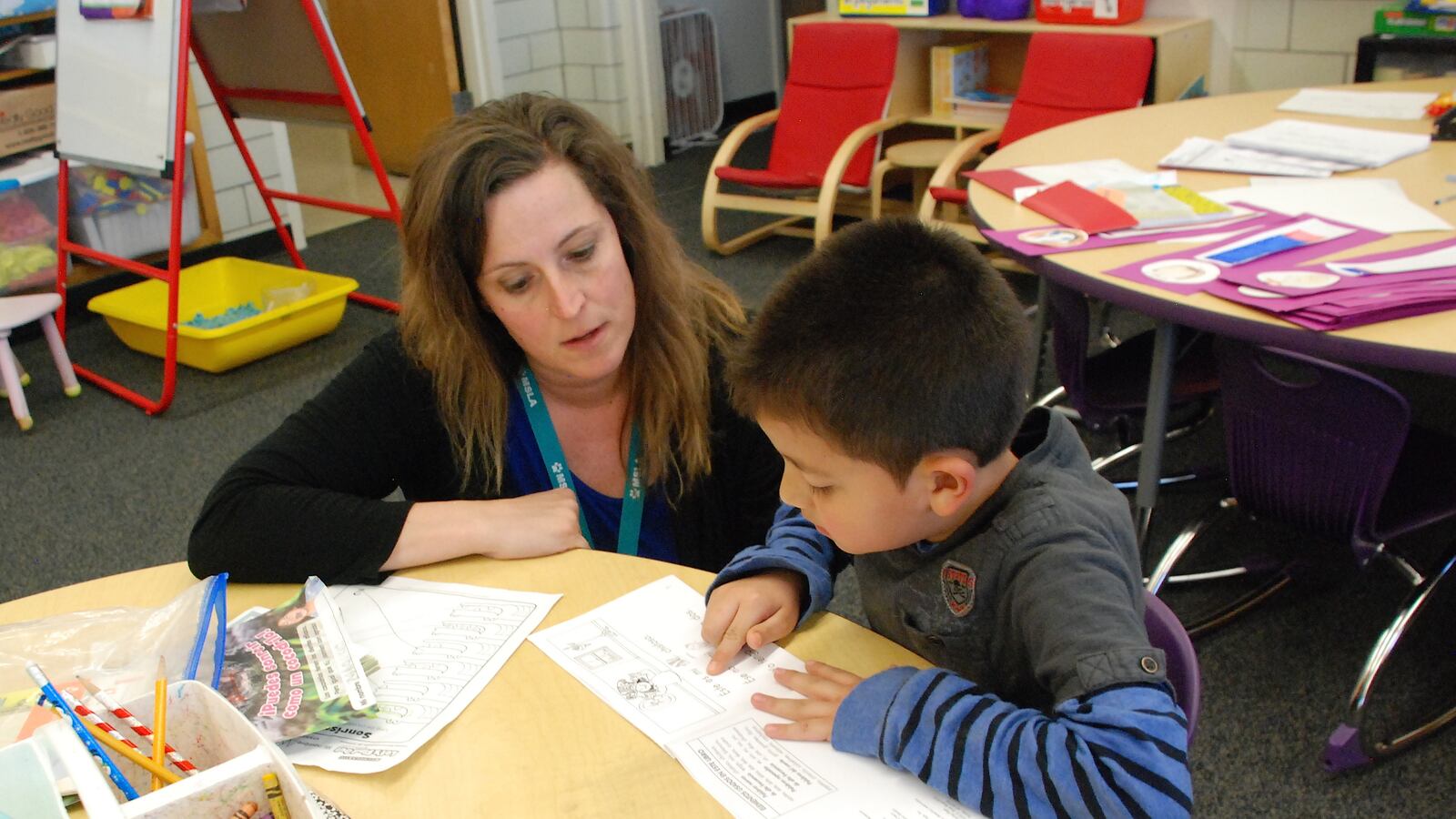For Cassandra Ewert-Lamutt, seeing some of her young students crumble from the relentless push to become better readers is heartbreaking.
One little girl—a second-grader whose first language is Spanish—recently broke down crying during a reading test.
“She said, ‘I just know I’m not as good as the other kids. It’s because I speak Spanish, too,’” recalled Ewert-Lamutt, who works with English language learners at Parr Elementary School in Arvada.
To Ewert-Lamutt, the student’s tattered emotional state is an extreme case, but reveals one way the nearly three-year-old READ Act—which has also garnered plenty of positive reviews—can impact Colorado kids.
The law, passed with solid majorities in 2012, is a stronger version of the state’s previous literacy law. It requires schools to identify struggling readers in kindergarten through third grade and create special plans using a list of state-approved approaches to help them improve. Starting next year, the law allows but doesn’t require administrators to hold back third-graders who still struggle with reading.
The READ Act is the only major Colorado education reform of recent years for which the legislature provided funding to districts for implementation.
As with many education policies, how things play out in the trenches depends on a host of factors ranging from district leadership to student demographics. Based on Chalkbeat’s interviews with a half-dozen teachers in urban, suburban and rural districts, educators often see the law as a mixed bag—promising, or at least well-intentioned, but not perfect.
Some educators argue that the READ Act contributes to the culture of overtesting, creates time-consuming paperwork and data entry for teachers, and offers too few resources for helping English-language learners. They also worry the retention provision could be misused.
Others say the law, which has counterparts in about two-thirds of states, has brought more urgency to the plight of struggling readers, helped schools more tightly focus reading instruction and provided critical new funding to help pay for it all. It’s also received plaudits for better informing parents about their children’s reading status and including them in the improvement process.
Part of the reason Colorado and so many other states have passed reading laws in recent years is because third-grade reading proficiency plays a big role in future success. Children who can’t read well by the end of third grade are more likely to drop out of school, which can lead to other problems like unemployment and criminal activity.
“The data is there that shows that third grade reading proficiency is huge,” said Bruce Atchison, director of early learning at the Denver-based Education Commission of the States, which tracks research and advises state education policymakers.
Overall, he believes the READ Act is a good approach.
“Is it the silver bullet? We don’t know that. We haven’t found the silver bullet.”
Looking at the numbers
Last year, nearly 14 percent of K-3 students in Colorado had a “significant reading deficiency”—READ Act terminology for struggling readers who get reading improvement plans under the law. That’s down from 16.5 percent in 2012.
This decrease—celebrated in a report issued by the business group Colorado Succeeds last summer—comes with a couple caveats. State officials say about 9,000 special education students weren’t initially tested under the READ Act—a factor that may have led to greater gains than if that population had been included. In addition, some districts have been slow to switch from the less sensitive tests used under Colorado’s old literacy law to the ones approved under the READ Act.
Starting July 1, all districts will have to use one of seven READ Act-approved tests.
Alisa Dorman, executive director of the state education department’s Office of Early Literacy, said there’s no similar deadline for including special education students in the testing, but as the state has provided training on the topic districts have been including them more each year.
Dorman said the initial reduction in struggling readers is an early indicator of success, but not definitive because of the data discrepancies.
Even after such wrinkles get ironed out, it’s not clear how much time it will take to see major changes in third grade reading proficiency.
“The truth is we really don’t know if these state legislative efforts are helpful or not because we don’t have enough data over long enough to be able to figure that out,” said Nell Duke, professor of literacy, language and culture at the University of Michigan.
She said when states do see positive results after the passage of laws like the READ Act, it’s hard to isolate which of their many components made a difference.
Grappling with testing
So what’s the READ Act experience like for the five- to nine-year-old students who’ve been living it out for the past few years?
It depends on their school, but frequent assessment—maybe 10 or 15 minutes every week or so—is par for the course for students with READ Plans. For some children, it’s a chance to have one-on-one time with teachers or paraprofessionals—sometimes with the extra bonus of working on an iPad. For others, like Ewert-Lamutt’s tearful second-grader, it can be a regular ding to self-esteem.
Duke said while such state-approved assessments can be useful for certain skills, they typically don’t cover the range of skills needed for reading success. For example, it’s much faster and easier to test whether children knows the ABCs than the thinking strategies they use to make meaning from what they read.

“An important piece for Colorado to grapple with is are we assessing and providing instruction in all the skills?” Duke said.
The meat of the READ Act are the tools used to help kids catch up. Sometimes, these don’t feel much different than the usual school fare. For example, all kids may head off to reading groups for a half-hour in the morning. Other times, the extra help is more obvious— computer-based reading activities, extra literacy groups, tutoring or summer school.
Dorman said finding the right kind of instruction is where schools need the most help.
“They need to know what to do next to really impact the change,” she said.

But teachers aren’t the only ones with their eyes on that goal. Students themselves often know what marks they have to hit to stay on track.
Kim Ursetta’s Spanish-speaking kindergarteners at Denver’s Mathematics and Science Leadership Academy monitor their monthly reading progress using small charts tucked inside red folders. On a recent afternoon, when Ursetta asked how many sight words they’d gotten correct that day, each quickly piped up with their personal best. One little girl in pigtails said two, the boy to her right said 15, and the boy to her left said 52.
At North Elementary School in Brighton, kindergarten teacher Rachelle Matossian tells her students to visualize a red, yellow and green stoplight to understand their path to reading success.
“We’re trying to get to the green zone,” she’ll tell the children, most of whom started the year far below grade level—in the red zone of a common reading test.
Teacher views run the gamut
Teachers’ feelings about the READ Act vary widely. For some, it depends on the path their school or district was on before the law.
Micah Evans, a first grade teacher in Greeley, said the READ Act didn’t require a major shift in practice because her district had already overhauled its elementary literacy program years earlier after it was placed on the state’s watch list for poor academic performance. Many of the district-initiated changes aligned with those in the READ Act.
“I think the READ Act is a positive thing for kids,” said Evans, a self-described data freak. “For us, it’s the normal way of life.”
For other teachers, the law feels more onerous—adding a new degree of chaos to daily schedules, requiring teachers to hit certain compliance marks and cutting into instruction time.
Matossian, who has seven students with significant reading deficiencies, estimated that she spends two to three hours a week giving some type of assessment, though not just for the READ Act.
Ursetta, who has about 10 students with reading troubles, has similar worries, both about testing time and the extra work she does to record the data—sometimes in four different places.
“I do think that there needs to be some sort of accountability,” she said. “It’s just a lot on your plate.”
Discrete skills versus the joy of reading
One blessing-and-a-curse aspect of the READ Act seems to be its emphasis on determining the very specific reading skills students struggle with and targeting instruction to those skills.

Some teachers said they appreciate the intentional and systematic approach favored under the READ Act, but others fear it fragments the reading experience and sucks the joy away.
“I just don’t want the skills to kill the desire to read….I guess that would be my one worry,” said Rita Merigan, a reading interventionist at Gunnison Elementary School. “Reading is so much more than these targeted pieces.”
Ewert-Lamutt, from Jeffco, has related concerns, worrying that few of the state-approved strategies address the literacy needs of English learners.
“Most of the interventions really focus on discrete ideas: This is a ‘t’ and it makes this sound ‘ta, ta, ta ta’….It’s not going to do it for them,” she said. “They need connections to real text.”
Dorman agreed that finding good materials for English learners is a challenge, but said it’s a supply and demand issue.
“I don’t think there’s a lot of selection in the market for that,” she said.
The specter of retention
In the first couple years of the READ Act, relatively few schools recommended that struggling readers be held back—a controversial strategy because some research suggests it’s ineffective.
State READ Act data reveals that just over 3,000 students—or 1.2 percent of the K-3 cohort—were recommended for retention and only 927 of them, or .4 percent, were actually retained in 2013-14.
“That is not an intervention strategy or a path that very many have chosen,” Dorman said.
A few teachers said they’ve recommended holding back students who were chronically absent or had across-the-board problems, but in the end it’s been up to parents.
That changes next year for third-graders. Although parents can still request advancement to fourth-grade, principals or other administrators will make the final decision. Exemptions from the provision are available for students who’ve already repeated third grade and some English learners and students with disabilities.
All told, 16 states and Washington, D.C. require holding back students who aren’t reading at grade level by the end of third grade, according to a 2014 report from the Education Commission of the States.
While the READ Act doesn’t go that far, some educators are nervous about the stricter retention provision.
“It kind gives you pause to wonder what that will look like,” Merigan said. “I don’t want to see a bunch of children held back.”

